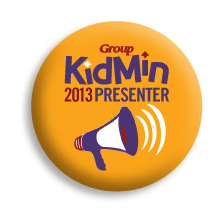
QUESTION: “We’ve used ‘time-out’ for years in our church, and now I hear you saying it doesn’t work. Please explain why you think it doesn’t work and what alternatives we can use.”
Children of divorce have a lot on their minds. Their brains might be on overload just thinking about whose house they are going to after school tomorrow. They may wonder who is picking them up from Sunday school. Or if both parents attend the same church, they wonder what might happen if mom sees dad and his new girlfriend at church.
Because these children’s minds tend to be in chaos, they act out. You might say their thinking is distorted. Confusion on the outside causes confusion on the inside. Many times, their misbehaviors are seeking external regulation. Their brains are on overload, so they can’t regulate their behavior internally and need your help.
Time-out has been used as a way to discipline children who might be unruly, disruptive, and/or out of control. Time-out is punitive for many children. And it could actually have the opposite effect of what you want for the child of divorce.
While the idea of getting an out-of-control child away from the other children is a noble one, for the most part, it doesn’t teach children how to manage their behavior. It might appear to work momentarily because the child is removed from the rest of the group. More than likely, you will send that same child to time-out again and again.
Adults who send a child to time-out usually say something like, “Now you sit there and think about what you just did.”
Reactions
- Most children won’t think about what just happened because for many kids, they were reacting to something. If you have a child who has been abused, then his mind is especially reactive. He saw someone coming toward him, and he lashed out in self-preservation.
- Many children of divorce need extra attention from an adult. The only way some of them know to get this attention is through their behavior.
What their inner voice is saying
When kids are sent to time-out to “think about what they have done,” here are some scenarios of what their inner voice is probably saying.
Teacher: Gage, you go to time-out, and you think about what you did.
Gage’s self-talk: Sure, I’ll think about hitting that girl, and I’m gonna think about hitting her again tomorrow, too. She grabbed my pencil when you weren’t looking, so tomorrow, I’m gonna hit her again but when you’re not looking! I will NOT get caught tomorrow.
Or Gage’s self-talk: What did I do wrong? I don’t know what I did. How am I supposed to know what I did? Isn’t somebody going to tell me what I did?
Or: Yeah, right. Like I’m going to sit here quietly. Ha, ha. I’ll get your attention, lady.
Gage then proceeds to sit under the chair, around the chair, pick up the chair, etc. And what happened? He got our attention.
What to do instead of time-out
Today, we realize that some kids need time away. They might need to take a break to be alone and away from other children. It is good to encourage children who are getting out of control to take a break.
You can set up a special place, like a beanbag in a corner, and allow children to take time away to rest. It is not a place to think about what they have done wrong or report back how they are going to handle things differently next time.
- It is a calming-down place.
- It is a place where a child can feel safe.
- It is a place of solitude.
- It is a place to be away from other people.
- For some, it might be a place to take a short nap.
You might put a few books in the break area. Encourage children to take a bottle of water with them. Dehydrated brains can’t think clearly. Some research shows that 20 minutes after drinking a glass of water, a child’s behavior will settle down. For some children, it might be a hunger issue. A few crackers or small snack will help many children.
One kindergarten teacher I know had a child with reactive attachment disorder (RAD). She kept a hula-hoop in her room, and when this boy started getting out of control, he could get out his hula-hoop. He could have anything in the room that would fit within the circle of the hoop with him in it. The other kids knew that was his place, and they left him alone when he was in there.
Another kindergarten teacher I worked with in North Carolina kept a bean-bag under her desk. She would pull it out when kids said they needed to take a break or when she thought a child needed to take a break. Taking a break is not meant as a punishment. As adults, we take breaks, don’t we?
Sometimes, children of divorce might need to block out the world around them, so they can calm themselves. Too many environments, places to be, and people to please might just be too much for these little minds. By using a time-away area, you will be teaching these children a life living skill—take a short break when you are stressed or frustrated. Even Jesus took time away from the crowds.
This article is updated and adapted from an article originally published on the Kids & Divorce blog on June 9, 2014.
DC4K blogs posts are great to use for training children’s leaders and volunteers and they are free. Subscribe to the DC4K blog here.
Want to learn more about how to start a DivorceCare for Kids group for the hurting children in your community? Click here.
Did you know DC4K blog articles are on Pinterest? Divorce & Kids, Children’s Pastors, Single Parents, etc. It’s all there. Check it out here
Follow Linda on Twitter, dc4klinda









